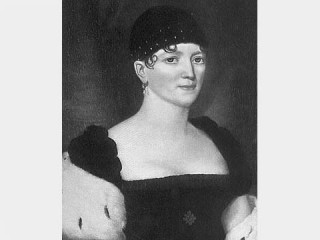
Elizabeth Kortright Monroe biography
Date of birth : 1768-06-30
Date of death : 1830-09-23
Birthplace : New York City, New York, U.S.
Nationality : American
Category : Famous Figures
Last modified : 2010-08-10
Credited as : First lady of the United States, wife of the US President James Monroe,
4 votes so far
Elizabeth Kortright Monroe was the wife of James Monroe, who served as president of the United States from 1817 to 1825. She is remembered for bringing a new formality to the White House social life.
Early Life in New York and Abroad
Elizabeth Kortright's father was a successful merchant in New York City who had made his fortunes while a privateer for the British Crown. He remained a Tory sympathizer even during the American Revolution. As a result of her social class, Elizabeth was raised in the formal fashion of the day. She was also considered a great beauty.
She met James Monroe in New York City in 1785 while he was in the then-nation's capital. At the time, Monroe was serving as Virginia delegate to the Congress of the Confederation. He was said to have little money, but he did have political ambition. There were some who questioned the suitability of the match. The couple married on February 16, 1786, and eventually had three children: Eliza Kortright, Maria Hester, and a son who died in infancy.
The Monroes moved to Fredericksburg, Virginia in 1789, where James Monroe opened a law practice. The Monroes did not settle in one place for any extended period as he was assigned to various foreign missions and political posts in Virginia throughout his political career. Their home base was Oak Hill, a property in Virginia James Monroe inherited from a family member. It was located about twenty miles from Washington, D.C.
Enjoyed Posting to Paris
James Monroe was appointed United States Minister to France in 1794. The couple lived in Paris from 1794 to 1796. The French admired Mrs. Monroe for her refined manners and beauty. She was called la belle Americaine.
As a result of the French Revolution members of the French upper class were being imprisoned and executed, among them Adrienne de Lafayette. She was the wife of Marquis de Lafayette, who had aided the United States during the American Revolutionary War. Her plight greatly concerned the Monroes. In defiance of convention, Elizabeth Monroe went to the prison to speak in support of Adrienne de Lafayette. This American interest was successful in securing the release of Madame de Lafayette.
The Monroes moved to Washington in 1811 when James Monroe served as James Madison's Secretary of State.
Changed Life in the White House
When Monroe became president in 1817, the White House had not yet been rebuilt. (The British had burned it during the War of 1812.) The Monroes had a temporary residence in the city while construction took place. The White House was officially reopened January 1, 1818; a public reception celebrated the event.
It was quickly discovered Elizabeth Monroe had a social style that was in stark contrast to the more expansive style of Dolley Madison, the previous first lady. Madison was a warm, gracious hostess, whose energetic entertaining style was in line with her Virginia upbringing. By comparison, Elizabeth Monroe favored austere formality.
The restorations in the White House made during the Monroe years utilized French decor rather than simple American furnishings. The first lady even favored clothing in the French High Empire style and proper attire at formal White House dinners. Obviously, these were a result both of her upbringing and their time spent abroad.
Social Graces Deemed Social Gaffes
President Monroe favored formality in White House social life; Elizabeth followed his wishes. Because formality was favored and because of her poor health, White House visitors were limited to those Mrs. Monroe had invited. Even the wedding of the Monroe's youngest daughter was a private affair. The first lady also decided against making social visits, which, according to the White House web site, was difficult in that day. She held receptions in the White House instead, but her daughter, Eliza, often served as hostess in her mother's place. The decision to hold weekly open house events did not assuage critics who then found fault with the class of people attending.
These incidents led people in the Washington society set, particularly other political and diplomatic wives, to suspect the first lady was a snob.
Chose a Very Private Life
Elizabeth Monroe's illness was a frequent and legitimate excuse for her absence from social events. The precise nature of her illness was never publicly disclosed. One speculation is perhaps her ailment was epilepsy. With little known about the ailment in that era, seizures could happen unexpectedly. Were that indeed the situation, the consequences would have been devastating to the Monroes.
The Monroes spent much time together throughout James Monroe's political career. They discussed politics and campaign strategy. The Monroes also spoke French among themselves. They were said to be the other's closest ally. Monroe personally saw to his wife's health needs.
Save for her immediate family, Elizabeth Monroe had few close friends. Louisa Adams, the wife of then-secretary of state John Quincy Adams, was among them. The women discussed many issues, especially how to change the public perceptions of the first lady.
Declined Further in Her Final Years
During Monroe's second term, Elizabeth's health deteriorated. She preferred spending time at Oak Hill to remaining in Washington, D.C. Upon his retirement in 1825, James Monroe joined her at their Virginia home.
Elizabeth Monroe died September 23, 1830, at Oak Hill. Little else is known about the personal lives of the Monroes. Her husband is said to have burned their letters.
















